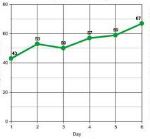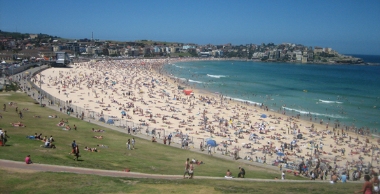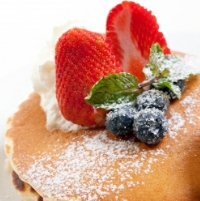Finding out about cholesterol can be a little confusing. First of all, what is it? Secondly, why is it bad for us? Is it all bad for us? Do we need it for anything? What can we do, short of medical intervention, to keep cholesterol in check?
This straight forward guide to cholesterol will help you keep yours at a healthy level.
What is cholesterol?
Cholesterol is a fat which is waxy in texture. It finds its way around the body in the blood and is found in all the body’s cells. It’s essential for the smooth functioning of the body. Whilst some cholesterol is taken in through the diet, about two-thirds of cholesterol is manufactured by the body in the liver.
What do we use cholesterol for?
Cholesterol is produced by the liver and also made by most cells in the body. It is carried around in the blood by lipoproteins – more about them later. The body uses small amounts of cholesterol for:
- the integrity of cell membranes
- manufacturing hormones including oestrogen, testosterone and adrenal hormones
- aiding certain metabolic processes, such as your body’s production of vitamin D
- helping the body digest fat and absorbing nutrients, via the production of bile acids
LDLs, HDLs and VLDLs
- Low density lipoprotein (LDL). This is what’s known as the bad cholesterol. It carries most of the cholesterol that is delivered to the cells, and when it reaches high levels in the bloodstream, it can clog up your arteries.
- High density lipoprotein (HDL), is called the ‘good’ cholesterol. It helps remove excess cholesterol out of the cells, including cells in the arteries.
- Very low density lipoprotein (VLDL). All of the lipoproteins are made up of cholesterol, protein and fats. VLSLs contain the highest amount of triglycerides of all the lipoproteins, which make them the worst type of cholesterol.
Blood Cholesterol Levels
It is recommended that cholesterol levels should be 5.5 mmols per litre IF there are no other risk factors present. If there are other cardiovascular risk factors like smoking, high blood pressure or pre existing cardiovascular heart disease, you should aim for a level of 2 mmols per litre of blood. Around about half of all Australian adults have a blood cholesterol leverl above 5mmol/l. Have you had yours checked lately?
HDL/LDL Ratio
This is the ratio of good cholesterol (HDL) to bad cholesterol (LDL). The ratio is determined by dividing the LDL cholesterol into the HDL cholesterol. For example, if a person has an HDL cholesterol of 50 mg/dL and an LDL cholesterol of 150 mg/dL, the HDL/LDL ratio would be 0.33. The goal is to keep the ratio above 0.3, with the ideal HDL/LDL ratio being above 0.4.
Which foods contain cholesterol?
- Eggs
- Animal products that are rich in fat such as meats and full fat dairy foods.
- Prawns and other shellfish
- All foods from animals contain some cholesterol. Foods from plants do not contain cholesterol.
Dietary tips for lower cholesterol
Generally, cholesterol from food has very little effect on the blood cholesterol level; the amount of saturated fat you eat is far more important. That’s good news if you’re looking to throw another shrimp on the bar -b this summer, as shellfish are generally low in saturated fats and are a good source of omega-3s.
Foods to avoid – I’m sure this list won’t surprise you
- Fatty meats
- Processed meats like salami and sausages
- Snack foods like chips
- Most takeaway foods, especially deep fried foods
- Cakes, biscuits and pastries.
The dietary “do’s” of cholesterol
- Increase the amount and variety of fresh fruit, vegetables and wholegrain foods you have each day.
- Choose lean meat (meat trimmed of fat or labelled as ‘heart smart’).
- Limit fatty meats, including sausages and salami, and choose leaner sandwich meats like turkey breast or cooked lean chicken.
- Have fish (fresh or canned) at least twice a week.
- Replace butter and dairy blends with polyunsaturated margarines.
- Include foods in your diet that are rich in soluble fibre and healthy fats, such as nuts, legumes and seeds. The fibre will help to “mop up” cholesterol
- Limit your cheese intake.
Cholesterol Cutting
Foods
- polyunsaturated oils such as sunflower oil and safflower oil
- oats
- legumes
- alfalfa sprouts (YUM)
- garlic and onion
Plant Sterols
Plant sterols are found naturally in plant foods including sunflower and canola seeds, vegetable oils and (in smaller amounts) nuts, legumes, cereals, fruit and vegetables. Some margarine and milks have concentrated plant sterols added to them. Margarines enriched with plant sterols may help lower LDL cholesterol.
Cholesterol lowering lifestyle tips
- Lower your triglyceride levels by cutting out alcohol, and if that doesn’t seem possible, reduce your alcohol intake to no more than one or two drinks a day. Avoid binge drinking.
- Don’t smoke. Smoking increases the ability of LDL cholesterol to get into artery cells and cause damage.
- Exercise regularly, and by regularly, I mean daily. At least one bout of exercise which will get you huffing and puffing a bit. Include more incidental exercise in your day. Getting up from your desk and having a walk around for a couple of minutes has been shown to reduce blood triglyceride levels. Exercise increases HDL levels while reducing LDL and triglyceride levels in the body.
- Lose any excess body fat. Being overweight may contribute to raised blood triglyceride and LDL levels.
- Control your blood sugar levels, particularly if you have diabetes. High blood sugars are linked to an increased risk of atherosclerosis (‘hardening of the arteries’).




 That’s a nice scary headline for women of a certain age, isn’t it? It’s one that did the rounds of online news sites a couple of weeks ago now.
That’s a nice scary headline for women of a certain age, isn’t it? It’s one that did the rounds of online news sites a couple of weeks ago now.
 Drinking water
Drinking water Snacking on Fruit
Snacking on Fruit Cutting fat from your diet
Cutting fat from your diet Exercise
Exercise Being Positive
Being Positive





